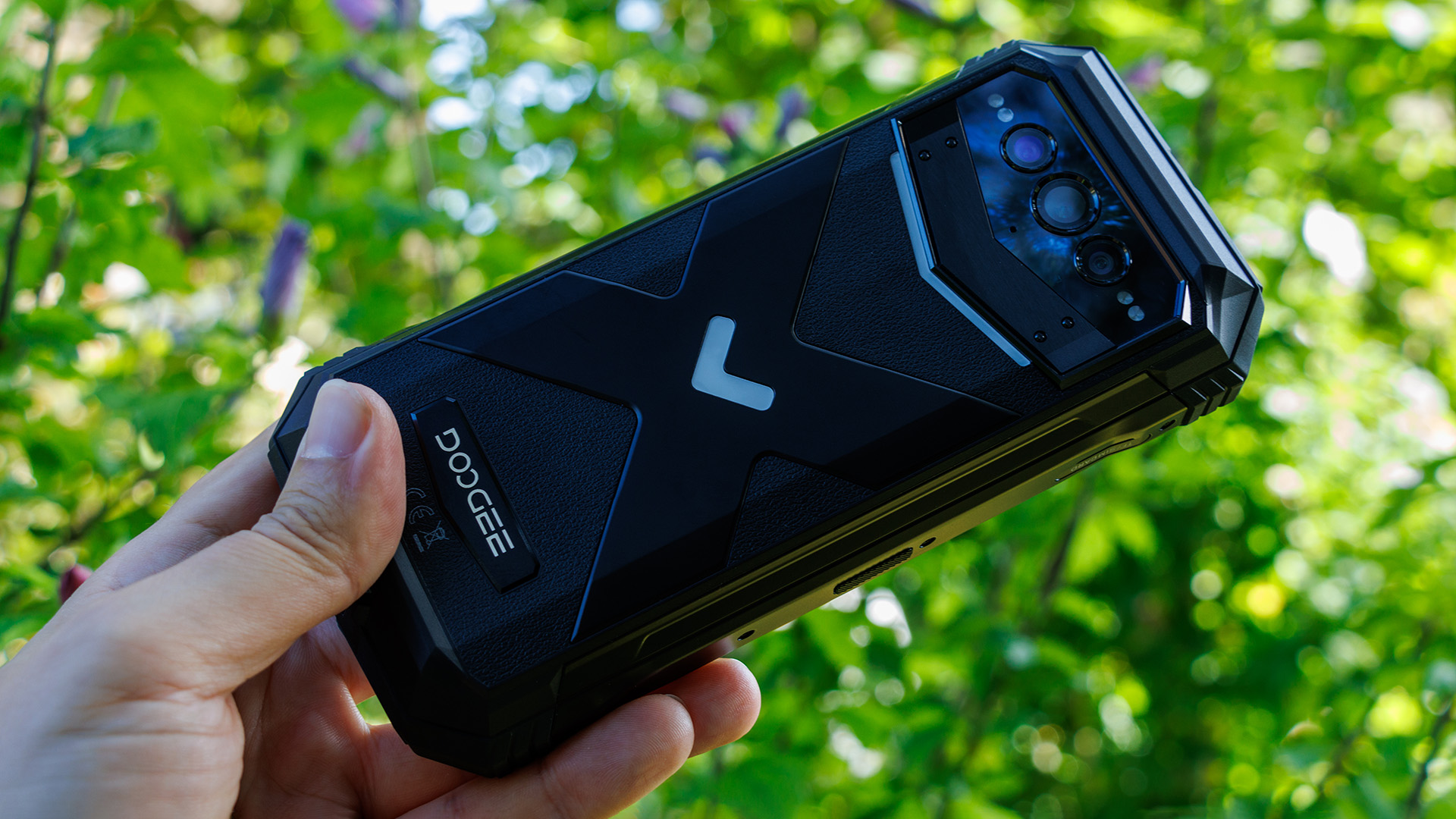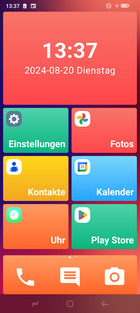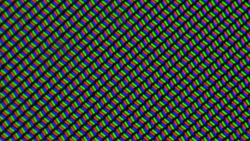
Recenzja Doogee V Max Plus - wytrzymały smartfon z potężną baterią
Proszę funt smartfona!
Doogee V Max Plus z pewnością nie jest kieszonkowym smartfonem, ale ma na celu zdobycie punktów dzięki baterii o pojemności 22 000 mA i solidnej konstrukcji. Oferuje również potrójny aparat z 200 MPix i noktowizorem, dużo pamięci i wyświetlacz IPS 120 Hz. Proszę przeczytać test, aby dowiedzieć się, czy to wystarczy, aby przekonać.Daniel Schmidt, 👁 Daniel Schmidt (tłumaczenie DeepL / Ninh Duy) Opublikowany 🇺🇸 🇩🇪 ...
Doogee V Max Plus to prawdziwa bestia, w szczególności dzięki solidnej konstrukcji i zintegrowanej baterii o pojemności 22 000 mAh. Wytrzymały smartfon jest zasilany przez Dimensity 7050 z 16 GB pamięci RAM i 512 GB pamięci, z których tę ostatnią można również rozszerzyć za pomocą karty microSD.
Nasz test wyjaśnia, czy cechy telefonu Doogee są wystarczające, aby stworzyć nową klasę wagową i co jeszcze oferuje.
Potencjalni konkurenci w porównaniu
Ocena | Wersja | Data | Model | Waga | napęd | Rozmiar | Rezolucja | Cena |
|---|---|---|---|---|---|---|---|---|
| 73.3 % | v8 | 08/2024 | Doogee V Max Plus Dimensity 7050, Mali-G68 MP4 | 539 g | 512 GB UFS 2.2 Flash | 6.58" | 2408x1080 | |
| 79.6 % v7 (old) | v7 (old) | 06/2024 | Oukitel WP35 Dimensity 6100+, Mali-G57 MP2 | 360 g | 256 GB eMMC 5.1 Flash | 6.60" | 2408x1080 | |
| 79.1 % v7 (old) | v7 (old) | 04/2024 | Cubot KingKong AX Helio G99, Mali-G57 MP2 | 296 g | 256 GB UFS 3.0 Flash | 6.58" | 2408x1080 | |
| 79.1 % v7 (old) | v7 (old) | 03/2024 | Samsung Galaxy XCover 7 Dimensity 6100+, Mali-G57 MP2 | 240 g | 128 GB UFS 2.1 Flash | 6.60" | 2408x1080 |
Uwaga: Zaktualizowaliśmy nasz system oceniania i wyniki wersji 8 nie są porównywalne z wynikami wersji 7 dostępnej tutaj.
Obudowa - V Max Plus posiada certyfikat IP69K i MIL-STD-810H
Doogee V Max Plus jest naprawdę ciężki i waży aż 539 gramów. Wytrzymały smartfon jest również bardzo gruby i ma ponad 26 milimetrów. Z drugiej strony jest bardzo wytrzymały i ma grubą wyściółkę ochronną. Jest zarówno pyłoszczelny, jak i wodoodporny zgodnie z certyfikatem IP68. Dzięki certyfikatowi IP69K idzie o krok dalej i powinien być również chroniony przed czyszczeniem strumieniem pod wysokim ciśnieniem / parą.
Smartfon Doogge przeszedł również testy zgodnie ze standardem MIL-STD-810H. Obejmują one testy odporności na upadki, a także ochronę przed kurzem, wodą, mgłą i wilgocią. Producent nie wdaje się jednak w szczegóły w tym zakresie.
Jakość wykonania jest dobra i pozostawia solidne wrażenie. Jednak plastik w kształcie litery X z tyłu nie jest zbyt wysokiej jakości i szybko wygląda na brudny. Przód chroniony jest szkłem Corning Gorilla Glass Victus.
Praktyczne: V Max Plus nie wymaga narzędzia SIM, ponieważ gniazdo karty można otworzyć palcami. Jest to gniazdo hybrydowe, które oferuje miejsce na dwie karty nano-SIM lub, zamiast drugiej karty SIM, na kartę microSD.
Cechy - smartfon Doogee z radiem i dużą diodą LED
Doogee V Max Plus oferuje port USB 2.0 jako fizyczny interfejs, który osiąga oczekiwany poziom w teście kopiowania z prędkością 38,68 MB/s i obsługuje OTG. Odbiornik radiowy FM powinien wykorzystywać podłączone słuchawki jako antenę. Test wykazał jednak problemy w tym zakresie. Choć podłączone słuchawki USB są rozpoznawane i również działają, aplikacja radiowa nie rozpoznaje ich jako anteny, przez co smartfon nie odbiera żadnej stacji.
Górna z dwóch diod LED w kształcie litery V na tylnej obudowie może świecić w przypadku wiadomości i połączeń przychodzących. Pulsuje również rytmicznie podczas odtwarzania muzyki. Z kolei dolna dioda LED jest aktywna tylko podczas ładowania smartfona.
Po lewej stronie znajduje się również konfigurowalny przycisk.
czytnik kart microSD
Czytnik kart microSD obsługuje karty pamięci o pojemności do 2 TB, ale nie obsługuje formatu exFAT. W teście kopiowania z naszą referencyjną kartą pamięci Angelbird AV Pro V60, szybkość transferu jest niska i wynosi 9,82 MB/s.
| SD Card Reader - average JPG Copy Test (av. of 3 runs) | |
| Oukitel WP35 (Angelbird V60) | |
| Cubot KingKong AX (Angelbird V60) | |
| Samsung Galaxy XCover 7 (Angelbird V60) | |
| Doogee V Max Plus (Angelbird AV Pro V60) | |
Cross Platform Disk Test (CPDT)
Oprogramowanie - Android 14 dla smartfona Doogee
Zrównoważony rozwój
Choć Doogee V Max Plus dostarczany jest w kartonowym opakowaniu, to jest ono w całości owinięte folią. Wkładka w pudełku jest wykonana z tworzywa sztucznego, a smartfon i zasilacz są również owinięte plastikiem.
Doogee nie podaje żadnych informacji na temat wykorzystania materiałów pochodzących z recyklingu ani śladu CO2 . Instrukcje naprawy nie są oficjalnie dostępne, podobnie jak odpowiednie części zamienne.
Nabywca V Max Plus nie powinien spodziewać się większych aktualizacji, ponieważ Doogee zapewnia gwarancję aktualizacji tylko przez sześć miesięcy.
Łączność i GNSS - Doogee V Max Plus oferuje 5G i Wi-Fi 6
Doogee V Max Plus obsługuje wszystkie popularne standardy komunikacji mobilnej, w tym 5G. Wyposażenie w częstotliwości jest przyzwoite i nie było problemów z odbiorem w środowisku miejskim.
Moduł Wi-Fi obsługuje Wi-Fi 6 (IEEE 802.11 ax) i w połączeniu z naszym referencyjnym routerem Asus ROG Rapture GT-AXE11000 zapewnia atrakcyjne i stabilne prędkości transferu.
| Networking | |
| Doogee V Max Plus | |
| iperf3 receive AXE11000 | |
| iperf3 transmit AXE11000 | |
| Oukitel WP35 | |
| iperf3 receive AXE11000 | |
| iperf3 transmit AXE11000 | |
| Cubot KingKong AX | |
| iperf3 receive AXE11000 | |
| iperf3 transmit AXE11000 | |
| Samsung Galaxy XCover 7 | |
| iperf3 receive AXE11000 | |
| iperf3 transmit AXE11000 | |
| Średnia w klasie Smartphone | |
| iperf3 receive AXE11000 | |
| iperf3 transmit AXE11000 | |
Doogee V Max Plus ustala satelitę bardzo szybko i dokładnie. W pomieszczeniach potrzeba trochę czasu, aby sygnał ustalił Państwa pozycję, ale wtedy jest on również dokładny.
Podczas przejażdżki rowerowej porównujemy wytrzymały smartfon z Garmin Venu 2, gdzie smartwatch fitness jest nieco dokładniejszy, ale V Max Plus również dobrze śledzi trasę.
Funkcje telefonu i jakość głosu
Doogee V Max Plus obsługuje dwie karty SIM (hybrydowa karta SIM, do dwóch kart nano-SIM), ale bez obsługi eSIM. Funkcje takie jak VoLTE i telefonia Wi-Fi są na pokładzie.
Jakość głosu jest nieco stłumiona, ale użytkownik smartfona Doogee pozostaje łatwy do zrozumienia w cichym otoczeniu. Nie ma zauważalnego tłumienia głośnego hałasu otoczenia.
Kamery - V Max Plus z 200 MP i noktowizorem
Przedni aparat Doogee V Max Plus nominalnie oferuje 32 MP, ale wykorzystuje binning pikseli, dzięki czemu finalne zdjęcia mają 8 MPix. Można jednak również korzystać z pełnej rozdzielczości. Filmy można nagrywać w rozdzielczości Full HD (30 FPS). Jakość jest w porządku, ale brakuje jej nieco pod względem dynamiki i ostrości.
Główny aparat z tyłu składa się z trzech obiektywów. Główny aparat ma rozdzielczość 200 MP, ale nie ma optycznej stabilizacji obrazu (OIS). Jakość zdjęć jest zadowalająca, ale występuje pewien odcień czerwieni, a jasne obszary mają tendencję do prześwietlania. Tutaj również zastosowano dzielenie pikseli (wynikowa rozdzielczość obrazu wynosi 12 MP).
Zintegrowana jest również kamera noktowizyjna o rozdzielczości 20 MPix. Zgodnie z oczekiwaniami, nadal zapewnia ona dobre obrazy w czerni i bieli w ciemności, ale ma problemy z wystarczająco szybką regulacją autofokusa w przypadku poruszających się lub bliskich obiektów.
Ultraszerokokątny obiektyw umożliwia również wykonywanie zdjęć makro. Połączenie obu funkcji w jednym obiektywie to dobry pomysł, ale niestety jakość zdjęć jest raczej słaba.
Filmy nagrywane są co najwyżej w Ultra HD (30 FPS). Podsumowując, V Max Plus nie jest topowym aparatem, ale lepszym w swojej klasie urządzeń.
Porównanie zdjęć
Wybierz jedną z dostępnych scen i porównuj powiększone fragmenty zdjęć. Jeden klik w oknie "kliknij aby powiększyć" rozpoczyna cały proces. Lewy klik w oknach poniżej otwiera oryginalne zdjęcia w nowym oknie przeglądarki. Zdjęcia wykonane urządzeniem z niniejszej recenzji można zobaczyć w większym oknie poniżej.
Main cameraMain cameraUltra wide-anglel5x ZoomLow-Light

Akcesoria i gwarancja - Zasilacz w zestawie
Doogee V Max Plus jest dostarczany z kablem USB (Type-C), modułowym 33-watowym zasilaczem, dodatkową osłoną ekranu i skróconą instrukcją obsługi.
Gwarancja wynosi 12 miesięcy i nie można jej przedłużyć. Nie ma to wpływu na Gwarancja.
Urządzenia wejściowe i obsługa - Tryb podwodny w V Max Plus
Pojemnościowy ekran dotykowy Doogee V Max Plus jest również chroniony przez fabryczną osłonę ekranu. Właściwości ślizgowe szkła Gorilla Glass pod spodem są dobre, a dane wejściowe są zwykle szybko wdrażane.
Dostępny jest specjalny tryb do zdjęć podwodnych, dzięki czemu aparat może być używany bez ograniczeń. Ekran dotykowy jest zablokowany, przycisk zwiększania głośności służy jako spust migawki, przycisk zmniejszania głośności może być używany do przełączania między funkcjami zdjęć i wideo, a przycisk zasilania ponownie kończy tryb.
Konfigurowalny przycisk funkcyjny po lewej stronie, zwany "funkcją klawisza bocznego", można skonfigurować w ustawieniach. Można do niego przypisać do trzech różnych poleceń.
Bezpieczeństwo biometryczne zapewnia pojemnościowy czujnik linii papilarnych w przycisku zasilania, który działa niezawodnie i odblokowuje smartfon z atrakcyjną prędkością. Dodatkowo lub alternatywnie można użyć mniej bezpiecznego rozpoznawania twarzy za pomocą przedniej kamery.
Silnik wibracyjny ERM nie jest zbyt gąbczasty i bardzo cichy, ale mógłby być nieco mocniejszy.
Wyświetlacz - panel IPS o wysokim kontraście i częstotliwości odświeżania 120 Hz
Wyświetlacz IPS w Doogee V Max Plus działa z częstotliwością do 120 Hz, ale częstotliwość odświeżania należy ustawić ręcznie. Oprócz trybu 120 Hz możliwe są również 90 lub 60 Hz. HDR jest nominalnie obsługiwany, ale wytrzymały smartfon nie ma certyfikatu DRM.
Doogee określa jasność na 480 nitów; zmierzyliśmy 552 cd/m² na środku ekranu przy jednolitym oświetleniu. Różnice są ledwo zauważalne, jeśli czujnik światła otoczenia jest aktywny: zmierzyliśmy 547 cd/m² z ręczną regulacją jasności i 539 cd/m² w teście APL18. Poziom czerni jest również przyjemnie niski i zapewnia wyraźne kontrasty (APL18 - 2156:1).
| |||||||||||||||||||||||||
rozświetlenie: 90 %
na akumulatorze: 552 cd/m²
kontrast: 2400:1 (czerń: 0.23 cd/m²)
ΔE Color 6.7 | 0.5-29.43 Ø4.87
ΔE Greyscale 14 | 0.5-98 Ø5.1
95.3% sRGB (Calman 2D)
Gamma: 0.27
| Doogee V Max Plus IPS, 2408x1080, 6.6" | Oukitel WP35 IPS, 2408x1080, 6.6" | Cubot KingKong AX IPS, 2408x1080, 6.6" | Samsung Galaxy XCover 7 PLS, 2408x1080, 6.6" | |
|---|---|---|---|---|
| Screen | -14% | -15% | -10% | |
| Brightness middle | 552 | 552 0% | 553 0% | 600 9% |
| Brightness | 539 | 549 2% | 521 -3% | 561 4% |
| Brightness Distribution | 90 | 94 4% | 86 -4% | 89 -1% |
| Black Level * | 0.23 | 0.42 -83% | 0.5 -117% | 0.57 -148% |
| Contrast | 2400 | 1314 -45% | 1106 -54% | 1053 -56% |
| Colorchecker dE 2000 * | 6.7 | 7.22 -8% | 7.18 -7% | 5.07 24% |
| Colorchecker dE 2000 max. * | 12.1 | 13.09 -8% | 10.23 15% | 8.1 33% |
| Greyscale dE 2000 * | 14 | 10.1 28% | 7.1 49% | 5.7 59% |
| Gamma | 0.27 815% | 1.785 123% | 2.291 96% | 2.249 98% |
| CCT | 7499 87% | 9036 72% | 8964 73% | 8162 80% |
* ... im mniej tym lepiej
Migotanie ekranu / PWM (modulacja szerokości impulsu)
| Migotanie ekranu/nie wykryto PWM | |||
Dla porównania: 53 % wszystkich testowanych urządzeń nie używa PWM do przyciemniania wyświetlacza. Jeśli wykryto PWM, zmierzono średnio 8516 (minimum: 5 - maksimum: 343500) Hz. | |||
Smartfon Doogee wypada słabo, jeśli chodzi o dokładne wyświetlanie skali szarości i kolorów na ekranie. Nie jest to jednak zauważalne w codziennym użytkowaniu.
Wyświetl czasy reakcji
| ↔ Czas reakcji od czerni do bieli | ||
|---|---|---|
| 26.68 ms ... wzrost ↗ i spadek ↘ łącznie | ↗ 10.79 ms wzrost | |
| ↘ 15.89 ms upadek | ||
| W naszych testach ekran wykazuje stosunkowo powolne tempo reakcji i może być zbyt wolny dla graczy. Dla porównania, wszystkie testowane urządzenia wahają się od 0.1 (minimum) do 240 (maksimum) ms. » 64 % wszystkich urządzeń jest lepszych. Oznacza to, że zmierzony czas reakcji jest gorszy od średniej wszystkich testowanych urządzeń (20.8 ms). | ||
| ↔ Czas reakcji 50% szarości do 80% szarości | ||
| 44.47 ms ... wzrost ↗ i spadek ↘ łącznie | ↗ 19.33 ms wzrost | |
| ↘ 25.14 ms upadek | ||
| W naszych testach ekran wykazuje powolne tempo reakcji, co będzie niezadowalające dla graczy. Dla porównania, wszystkie testowane urządzenia wahają się od 0.165 (minimum) do 636 (maksimum) ms. » 74 % wszystkich urządzeń jest lepszych. Oznacza to, że zmierzony czas reakcji jest gorszy od średniej wszystkich testowanych urządzeń (32.5 ms). | ||
Doogee V Max Plus pozostaje dość łatwy do odczytania na zewnątrz w większości sytuacji oświetleniowych. Staje się to trudne tylko w palącym słońcu.
Stabilność kąta widzenia wyświetlacza IPS jest dobra. Jasność wyraźnie spada przy płaskich kątach widzenia, a na czarnym tle można zaobserwować lekki efekt poświaty.
Wydajność - Doogee stawia na Dimensity 7050
Doogee V Max Plus oferuje tylko 16 GB pamięci RAM i 512 GB pamięci wewnętrznej. SoC to MediaTek Dimensity 7050który jest ulepszoną wersją Dimensity 900.
Wytrzymały smartfon zapewnia dobrą wydajność systemu w polu porównawczym, co jest również subiektywnie potwierdzone.
| Antutu v10 - Total Score | |
| Średnia w klasie Smartphone (142748 - 3015111, n=132, ostatnie 2 lata) | |
| Doogee V Max Plus | |
| Przeciętny MediaTek Dimensity 7050 (503958 - 604738, n=2) | |
| Lenovo Tab P12 Paper | |
| CrossMark - Overall | |
| Średnia w klasie Smartphone (187 - 2674, n=164, ostatnie 2 lata) | |
| Doogee V Max Plus | |
| Lenovo Tab P12 Paper | |
| Przeciętny MediaTek Dimensity 7050 (575 - 706, n=4) | |
| Samsung Galaxy XCover 7 | |
| UL Procyon AI Inference for Android - Overall Score NNAPI | |
| Doogee V Max Plus | |
| Średnia w klasie Smartphone (1267 - 81594, n=153, ostatnie 2 lata) | |
| Przeciętny MediaTek Dimensity 7050 (5266 - 23122, n=4) | |
| Samsung Galaxy XCover 7 | |
| Lenovo Tab P12 Paper | |
| AImark - Score v3.x | |
| Średnia w klasie Smartphone (82 - 307528, n=141, ostatnie 2 lata) | |
| Doogee V Max Plus | |
| Przeciętny MediaTek Dimensity 7050 (456 - 9646, n=4) | |
| Samsung Galaxy XCover 7 | |
| Lenovo Tab P12 Paper | |
Jednostką graficzną jest zintegrowany ARM Mali-G68 MP4który plasuje się w niższej klasie średniej. Nie obsługuje ona ray tracingu, ale zapewnia solidną wydajność.
GFXBench (DX / GLBenchmark) 2.7: T-Rex Onscreen | 1920x1080 T-Rex Offscreen
GFXBench 3.0: on screen Manhattan Onscreen OGL | 1920x1080 1080p Manhattan Offscreen
GFXBench 3.1: on screen Manhattan ES 3.1 Onscreen | 1920x1080 Manhattan ES 3.1 Offscreen
GFXBench: on screen Car Chase Onscreen | 1920x1080 Car Chase Offscreen | on screen Aztec Ruins High Tier Onscreen | 2560x1440 Aztec Ruins High Tier Offscreen | on screen Aztec Ruins Normal Tier Onscreen | 1920x1080 Aztec Ruins Normal Tier Offscreen | 3840x2160 4K Aztec Ruins High Tier Offscreen
| 3DMark / Steel Nomad Light Unlimited Score | |
| Lenovo Tab P12 Paper | |
| Doogee V Max Plus | |
| 3DMark / Steel Nomad Light Score | |
| Lenovo Tab P12 Paper | |
| Doogee V Max Plus | |
| 3DMark / Wild Life Extreme Unlimited | |
| Lenovo Tab P12 Paper | |
| Doogee V Max Plus | |
| Cubot KingKong AX | |
| Samsung Galaxy XCover 7 | |
| Oukitel WP35 | |
| 3DMark / Wild Life Extreme | |
| Lenovo Tab P12 Paper | |
| Doogee V Max Plus | |
| Cubot KingKong AX | |
| Samsung Galaxy XCover 7 | |
| Oukitel WP35 | |
| 3DMark / Wild Life Unlimited Score | |
| Lenovo Tab P12 Paper | |
| Doogee V Max Plus | |
| Cubot KingKong AX | |
| Samsung Galaxy XCover 7 | |
| Oukitel WP35 | |
| 3DMark / Wild Life Score | |
| Doogee V Max Plus | |
| Lenovo Tab P12 Paper | |
| Samsung Galaxy XCover 7 | |
| Oukitel WP35 | |
| Cubot KingKong AX | |
| 3DMark / Sling Shot Extreme (ES 3.1) Unlimited Physics | |
| Lenovo Tab P12 Paper | |
| Doogee V Max Plus | |
| Cubot KingKong AX | |
| Oukitel WP35 | |
| Samsung Galaxy XCover 7 | |
| 3DMark / Sling Shot Extreme (ES 3.1) Unlimited Graphics | |
| Doogee V Max Plus | |
| Lenovo Tab P12 Paper | |
| Cubot KingKong AX | |
| Samsung Galaxy XCover 7 | |
| Oukitel WP35 | |
| 3DMark / Sling Shot Extreme (ES 3.1) Unlimited | |
| Doogee V Max Plus | |
| Lenovo Tab P12 Paper | |
| Cubot KingKong AX | |
| Samsung Galaxy XCover 7 | |
| Oukitel WP35 | |
| GFXBench (DX / GLBenchmark) 2.7 / T-Rex Onscreen | |
| Doogee V Max Plus | |
| Lenovo Tab P12 Paper | |
| Samsung Galaxy XCover 7 | |
| GFXBench (DX / GLBenchmark) 2.7 / T-Rex Offscreen | |
| Doogee V Max Plus | |
| Lenovo Tab P12 Paper | |
| Samsung Galaxy XCover 7 | |
| GFXBench 3.0 / Manhattan Onscreen OGL | |
| Doogee V Max Plus | |
| Samsung Galaxy XCover 7 | |
| Lenovo Tab P12 Paper | |
| GFXBench 3.0 / 1080p Manhattan Offscreen | |
| Doogee V Max Plus | |
| Lenovo Tab P12 Paper | |
| Samsung Galaxy XCover 7 | |
| GFXBench 3.1 / Manhattan ES 3.1 Onscreen | |
| Doogee V Max Plus | |
| Samsung Galaxy XCover 7 | |
| Lenovo Tab P12 Paper | |
| GFXBench 3.1 / Manhattan ES 3.1 Offscreen | |
| Lenovo Tab P12 Paper | |
| Doogee V Max Plus | |
| Samsung Galaxy XCover 7 | |
| GFXBench / Car Chase Onscreen | |
| Doogee V Max Plus | |
| Samsung Galaxy XCover 7 | |
| Lenovo Tab P12 Paper | |
| GFXBench / Car Chase Offscreen | |
| Lenovo Tab P12 Paper | |
| Doogee V Max Plus | |
| Samsung Galaxy XCover 7 | |
| GFXBench / Aztec Ruins High Tier Onscreen | |
| Doogee V Max Plus | |
| Cubot KingKong AX | |
| Samsung Galaxy XCover 7 | |
| Oukitel WP35 | |
| Lenovo Tab P12 Paper | |
| GFXBench / Aztec Ruins High Tier Offscreen | |
| Lenovo Tab P12 Paper | |
| Doogee V Max Plus | |
| Cubot KingKong AX | |
| Samsung Galaxy XCover 7 | |
| Oukitel WP35 | |
| GFXBench / Aztec Ruins Normal Tier Onscreen | |
| Doogee V Max Plus | |
| Cubot KingKong AX | |
| Samsung Galaxy XCover 7 | |
| Oukitel WP35 | |
| Lenovo Tab P12 Paper | |
| GFXBench / Aztec Ruins Normal Tier Offscreen | |
| Lenovo Tab P12 Paper | |
| Doogee V Max Plus | |
| Cubot KingKong AX | |
| Samsung Galaxy XCover 7 | |
| Oukitel WP35 | |
| GFXBench / 4K Aztec Ruins High Tier Offscreen | |
| Lenovo Tab P12 Paper | |
| Doogee V Max Plus | |
| Cubot KingKong AX | |
| Samsung Galaxy XCover 7 | |
| Oukitel WP35 | |
| Jetstream 2 - 2.0 Total Score | |
| Średnia w klasie Smartphone (13.8 - 387, n=171, ostatnie 2 lata) | |
| Przeciętny MediaTek Dimensity 7050 (75.9 - 108.8, n=4) | |
| Doogee V Max Plus (Chrome 127) | |
| Samsung Galaxy XCover 7 (Chrome 122) | |
| Speedometer 2.0 - Result | |
| Średnia w klasie Smartphone (15.2 - 569, n=151, ostatnie 2 lata) | |
| Doogee V Max Plus (Chrome 127) | |
| Przeciętny MediaTek Dimensity 7050 (77.5 - 100, n=4) | |
| Samsung Galaxy XCover 7 (Chrome 122) | |
| WebXPRT 4 - Overall | |
| Średnia w klasie Smartphone (22 - 271, n=162, ostatnie 2 lata) | |
| Doogee V Max Plus (Chrome 127) | |
| Przeciętny MediaTek Dimensity 7050 (66 - 107, n=4) | |
| Samsung Galaxy XCover 7 (Chrome 122) | |
| Octane V2 - Total Score | |
| Średnia w klasie Smartphone (2228 - 100368, n=210, ostatnie 2 lata) | |
| Doogee V Max Plus (Chrome 127) | |
| Przeciętny MediaTek Dimensity 7050 (31245 - 37214, n=5) | |
| Cubot KingKong AX (Chrome 122) | |
| Oukitel WP35 (Chrome 124) | |
| Samsung Galaxy XCover 7 (Chrome 122) | |
| Mozilla Kraken 1.1 - Total | |
| Samsung Galaxy XCover 7 (Chrome 122) | |
| Doogee V Max Plus (Chrome 127) | |
| Przeciętny MediaTek Dimensity 7050 (1264 - 1656, n=4) | |
| Średnia w klasie Smartphone (277 - 28190, n=171, ostatnie 2 lata) | |
* ... im mniej tym lepiej
| Doogee V Max Plus | Oukitel WP35 | Cubot KingKong AX | Samsung Galaxy XCover 7 | Przeciętny 512 GB UFS 2.2 Flash | Średnia w klasie Smartphone | |
|---|---|---|---|---|---|---|
| AndroBench 3-5 | -86% | -23% | -37% | -18% | 18% | |
| Sequential Read 256KB | 1860.16 | 292 -84% | 1000.7 -46% | 488.2 -74% | 1033 ? -44% | 2030 ? 9% |
| Sequential Write 256KB | 1611.59 | 149.5 -91% | 915.2 -43% | 501 -69% | 950 ? -41% | 1646 ? 2% |
| Random Read 4KB | 239.64 | 61.7 -74% | 230.6 -4% | 212 -12% | 232 ? -3% | 282 ? 18% |
| Random Write 4KB | 225.34 | 9.4 -96% | 233.2 3% | 240.2 7% | 259 ? 15% | 325 ? 44% |
Emisje - Stabilna wydajność
Temperatura
Temperatura powierzchni wzrasta powyżej 37 stopni tylko w niektórych miejscach z przodu, nawet przy stałym obciążeniu.
SoC nie robi również wrażenia na testach obciążeniowych 3DMark i nie ponosi żadnych strat.
(+) Maksymalna temperatura w górnej części wynosi 37.4 °C / 99 F, w porównaniu do średniej 35.1 °C / 95 F , począwszy od 21.9 do 63.7 °C dla klasy Smartphone.
(+) Dno nagrzewa się maksymalnie do 32.3 °C / 90 F, w porównaniu do średniej 33.9 °C / 93 F
(+) W stanie bezczynności średnia temperatura górnej części wynosi 31.1 °C / 88 F, w porównaniu ze średnią temperaturą urządzenia wynoszącą 32.8 °C / ### class_avg_f### F.
3DMark Steel Nomad Stress Test
| 3DMark | |
| Wild Life Stress Test Stability | |
| Samsung Galaxy XCover 7 | |
| Oukitel WP35 | |
| Doogee V Max Plus | |
| Cubot KingKong AX | |
| Wild Life Extreme Stress Test | |
| Doogee V Max Plus | |
| Samsung Galaxy XCover 7 | |
| Cubot KingKong AX | |
| Oukitel WP35 | |
| Steel Nomad Light Stress Test Stability | |
| Doogee V Max Plus | |
Głośnik
Głośniki z przodu są dobrze ustawione i mogą być bardzo głośne, ale oferują dźwięk o zbyt dużej dominacji wysokich tonów, który brzmi blado i ciasno i zniekształca słyszalnie nawet przy średniej głośności.
Doogee nie podaje żadnych informacji na temat obsługiwanych kodeków audio dla Bluetooth. Niestety, nie można ich również odczytać.
Doogee V Max Plus analiza dźwięku
(+) | głośniki mogą odtwarzać stosunkowo głośno (94 dB)
Bas 100 - 315 Hz
(-) | prawie brak basu - średnio 17.9% niższa od mediany
(+) | bas jest liniowy (2.8% delta do poprzedniej częstotliwości)
Średnie 400 - 2000 Hz
(±) | wyższe średnie - średnio 6.4% wyższe niż mediana
(+) | średnie są liniowe (4.8% delta do poprzedniej częstotliwości)
Wysokie 2–16 kHz
(±) | wyższe maksima - średnio 6.9% wyższe od mediany
(+) | wzloty są liniowe (4.7% delta do poprzedniej częstotliwości)
Ogólnie 100 - 16.000 Hz
(±) | liniowość ogólnego dźwięku jest średnia (18.3% różnicy w stosunku do mediany)
W porównaniu do tej samej klasy
» 16% wszystkich testowanych urządzeń w tej klasie było lepszych, 8% podobnych, 75% gorszych
» Najlepszy miał deltę 12%, średnia wynosiła ###średnia###%, najgorsza wynosiła 134%
W porównaniu do wszystkich testowanych urządzeń
» 37% wszystkich testowanych urządzeń było lepszych, 7% podobnych, 55% gorszych
» Najlepszy miał deltę 4%, średnia wynosiła ###średnia###%, najgorsza wynosiła 134%
Samsung Galaxy XCover 7 analiza dźwięku
(+) | głośniki mogą odtwarzać stosunkowo głośno (84.3 dB)
Bas 100 - 315 Hz
(-) | prawie brak basu - średnio 25.6% niższa od mediany
(±) | liniowość basu jest średnia (10.8% delta do poprzedniej częstotliwości)
Średnie 400 - 2000 Hz
(±) | wyższe średnie - średnio 6.3% wyższe niż mediana
(±) | liniowość środka jest średnia (7% delta do poprzedniej częstotliwości)
Wysokie 2–16 kHz
(±) | wyższe maksima - średnio 5.4% wyższe od mediany
(+) | wzloty są liniowe (6.1% delta do poprzedniej częstotliwości)
Ogólnie 100 - 16.000 Hz
(±) | liniowość ogólnego dźwięku jest średnia (20.9% różnicy w stosunku do mediany)
W porównaniu do tej samej klasy
» 35% wszystkich testowanych urządzeń w tej klasie było lepszych, 8% podobnych, 56% gorszych
» Najlepszy miał deltę 12%, średnia wynosiła ###średnia###%, najgorsza wynosiła 134%
W porównaniu do wszystkich testowanych urządzeń
» 54% wszystkich testowanych urządzeń było lepszych, 8% podobnych, 38% gorszych
» Najlepszy miał deltę 4%, średnia wynosiła ###średnia###%, najgorsza wynosiła 134%
Żywotność baterii - najlepszy wynik w naszej bazie danych
Zużycie energii
Zużycie energii przez Doogee V Max Plus jest wyższe w naszych pomiarach, ale wynika to głównie z panelu.
Smartfon jest ładowany z maksymalną mocą 33 watów. Pełne ładowanie trwa jednak cztery godziny i 20 minut. 50 procent zostaje osiągnięte po 96 minutach, a 80 procent po 172 minutach.
| wyłączony / stan wstrzymania | |
| luz | |
| obciążenie |
|
Legenda:
min: | |
| Doogee V Max Plus 22000 mAh | Samsung Galaxy XCover 7 4050 mAh | Przeciętny MediaTek Dimensity 7050 | Średnia w klasie Smartphone | |
|---|---|---|---|---|
| Power Consumption | 51% | -22% | 19% | |
| Idle Minimum * | 1.65 | 1 39% | 1.487 ? 10% | 0.872 ? 47% |
| Idle Average * | 2.66 | 1.2 55% | 3.97 ? -49% | 1.438 ? 46% |
| Idle Maximum * | 2.76 | 1.3 53% | 4.19 ? -52% | 1.582 ? 43% |
| Load Average * | 4.89 | 2.3 53% | 6.36 ? -30% | 6.99 ? -43% |
| Load Maximum * | 10.5 | 4.5 57% | 9.4 ? 10% | 10.4 ? 1% |
* ... im mniej tym lepiej
Power consumption: Geekbench (150 cd/m²)
Power consumption: GFXBench (150 cd/m²)
Żywotność baterii
Zmierzyliśmy czas pracy baterii Doogee V Max Plus z dostosowaną jasnością wyświetlacza (150 cd/m²) i stałą częstotliwością odświeżania 120 Hz.
Wytrzymały smartfon z baterią o pojemności 22 000 mAh wspiął się na szczyt naszej bazy danych i zapewnia ogromne czasy pracy. Kilka dni bez ładowania nie powinno stanowić problemu.
| Czasy pracy - WiFi v1.3 | |
| Doogee V Max Plus | |
| Oukitel WP35 | |
| Cubot KingKong AX | |
| Samsung Galaxy XCover 7 | |
Za
Przeciw
Werdykt - Potwornego smartfona nie da się zmniejszyć
Doogee V Max Plus wyróżnia się ogromną wytrzymałością dzięki ogromnej baterii. Codzienna wydajność jest dobra, a użytkownik ma do dyspozycji dużo pamięci, którą można nawet rozszerzyć. Ten wytrzymały telefon jest również bardzo solidny i może pochwalić się kilkoma certyfikatami.
Doogee V Max Plus jest z pewnością bardziej niszowym produktem ze względu na dużą wagę i nieporęczne wymiary, ale ma też swoje zalety.
Aparat z głównym czujnikiem 200 MP nie jest do końca przekonujący, ale optyka noktowizyjna sprawia, że urządzenie jest bardziej ekscytujące, zwłaszcza że daje dobre wyniki. Konfigurowalny przycisk funkcyjny i tryb podwodny są również pozytywnymi cechami, zwłaszcza że funkcje lokalizacji są imponujące.
V Max Plus nie jest jednak urządzeniem multimedialnym. Głośniki są raczej przeciętne, a dzięki DRM Widevine L3 chronione treści w HD są odrzucane.
Smuklejszą i solidniejszą alternatywą jest Galaxy Xcover 7.
Cena i dostępność
Doogee V Max Plus ma zalecaną cenę detaliczną 599 euro i jest dostępny bezpośrednio od producenta https://de.doogee.cc/products/doogee-v-max-plus. W czasie testów był znacznie droższy na Amazon ale był dostępny na AliExpress za mniej niż 300 euro.
Uwaga: Zaktualizowaliśmy nasz system oceniania i wyniki wersji 8 nie są porównywalne z wynikami wersji 7 dostępnej tutaj.
Doogee V Max Plus
- 20/08/2024 v8
Daniel Schmidt
Przezroczystość
Wyboru urządzeń do recenzji dokonuje nasza redakcja. Próbka testowa została udostępniona autorowi przez producenta bezpłatnie do celów recenzji. Na tę recenzję nie miały wpływu osoby trzecie, a producent nie otrzymał kopii tej recenzji przed publikacją. Nie było obowiązku publikowania tej recenzji. Nigdy nie przyjmujemy rekompensaty ani płatności w zamian za nasze recenzje. Jako niezależna firma medialna, Notebookcheck nie podlega władzy producentów, sprzedawców detalicznych ani wydawców.
Tak testuje Notebookcheck
Każdego roku Notebookcheck niezależnie sprawdza setki laptopów i smartfonów, stosując standardowe procedury, aby zapewnić porównywalność wszystkich wyników. Od około 20 lat stale rozwijamy nasze metody badawcze, ustanawiając przy tym standardy branżowe. W naszych laboratoriach testowych doświadczeni technicy i redaktorzy korzystają z wysokiej jakości sprzętu pomiarowego. Testy te obejmują wieloetapowy proces walidacji. Nasz kompleksowy system ocen opiera się na setkach uzasadnionych pomiarów i benchmarków, co pozwala zachować obiektywizm.













































 Total Sustainability Score:
Total Sustainability Score: 







